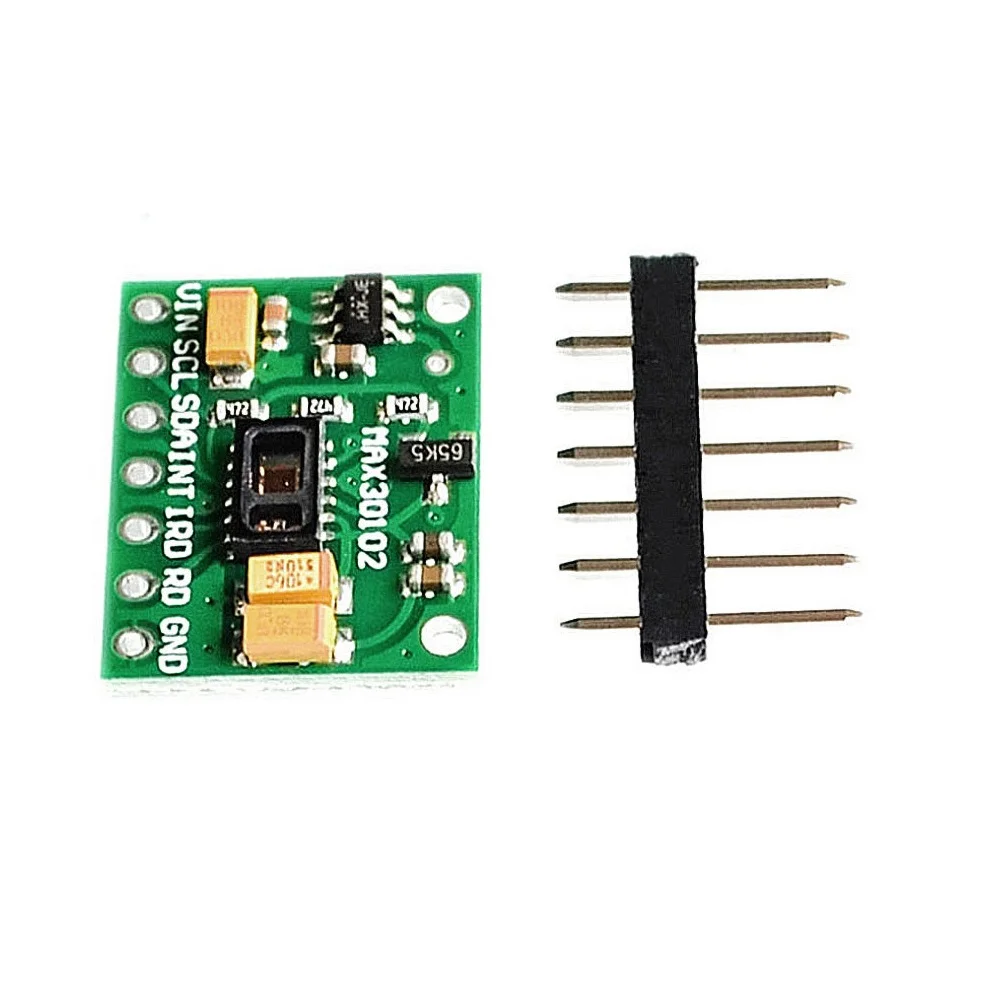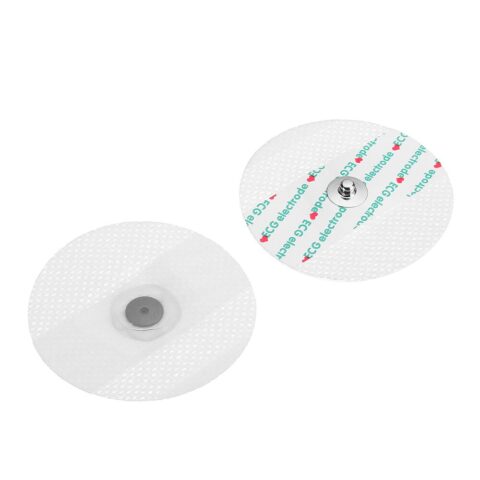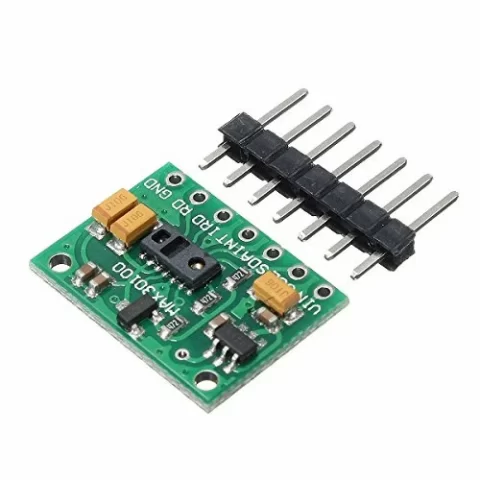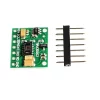Frequently Bought Together
MAX30102 Pulse Oximeter and Heart-Rate Sensor Module is a complete solution for monitoring critical vital signs, integrating both a pulse oximetry and heart rate monitoring system into a tiny, low-power package. This high-performance sensor combines two LEDs—red and infrared—a photodetector, optimized optics, and low-noise analog signal processing. By measuring the changes in light absorption through a fingertip or earlobe, the MAX30102 accurately detects the user’s heart rate and the level of oxygen saturation in the blood (SpO₂). Designers rely on this module for creating small, wearable health devices due to its remarkable power efficiency, excellent immunity to ambient light, and simple I²C interface, making it a powerful tool for consumer, fitness, and medical monitoring projects.
Key Features:
- Integrated Solution: Combines red LED, infrared LED, photo-sensor, and advanced analog front-end for complete vital sign acquisition.
- Ultra-Low Power: Optimized for use in wearable devices, featuring a shutdown mode that draws minimal current to extend battery life significantly.
- I²C Digital Interface: Allows easy communication with any microcontroller using a standard two-wire protocol, simplifying data retrieval.
- High Sensitivity: Optimized signal processing enables reliable readings even with low perfusion (poor blood flow) or motion artifacts.
- On-Chip Temperature Sensor: Provides ambient temperature measurement, assisting in calibration and compensation for more accurate readings.
Technical Specifications:
- Supply Voltage (VDD): 1.8 V to 5.0 V
- LED Operating Voltage (VLED): 3.3 V or 5.0 V (Usually connected to VDD)
- Interface: I²C Communication Protocol
- LED Wavelengths: Red (≈ 660 nm) and Infrared (IR ≈ 880 nm)
- Data Output: 16-bit A/D Converter output
- Max Sample Rate: Up to 3.2 kSps (kilo Samples per Second)
Mechanical Specifications:
- Form Factor: Small PCB module with surface-mount components.
- Mounting: Pin headers for through-hole mounting or soldering onto prototype boards.
- Protection: Integrated cover glass for optimal, non-contact signal detection and easy cleaning.
Dimensions:
- Module Length: ≈ 12.0 mm
- Module Width: ≈ 8.0 mm
- Pin Pitch: 2.54 mm (0.1 inch standard)
- Weight: ≈ 1 g (Extremely lightweight)
Pinout and Wiring:
- VCC/VDD: Main power supply input (1.8 V to 5.0 V).
- GND: Ground reference for the power supply and data.
- SDA: Serial Data line for the I²C bus. Connect to the microcontroller’s SDA pin.
- SCL: Serial Clock line for the I²C bus. Connect to the microcontroller’s SCL pin.
- INT: Interrupt output pin. Active-low pin used to alert the microcontroller when new data is ready.
- RD: Red LED power pin (Often connected to VCC or a separate 3.3V/5V rail).
- IR: Infrared LED power pin (Often connected to VCC or a separate 3.3V/5V rail).
- Wiring Note: You must connect pull-up resistors (typically 4.7 kΩ) on the SDA and SCL lines for reliable I²C communication.
Datasheet Reference:
Commonly Used in:
- DIY Health Trackers: Building custom wristbands and rings for fitness monitoring.
- Wearable Medical Prototypes: Developing low-cost, portable diagnostic devices.
- Home Automation Systems: Integrating presence detection and basic health data into smart homes.
Applications:
- Heart Rate Monitoring: Measuring pulse beats per minute (BPM) reliably during rest and activity.
- Pulse Oximetry (SpO₂): Determining the oxygen saturation level in a user’s blood.
- Motion Sensing: Using the data stream to detect involuntary body movement for data integrity analysis.
Equivalent Models:
- MAX30100: The predecessor, which is slightly larger and lacks some of the low-power and advanced noise suppression features of the MAX30102.
- ADPD188: An alternative integrated optical module from Analog Devices for bio-sensing.
Package Includes:
- 1 x MAX30102 Pulse Oximeter and Heart-Rate Sensor Module
Additional information
| Weight | 2 g |
|---|---|
| Dimensions | 20 × 15 × 3 mm |
| INPUT VOLTAGE | 5v |










Reviews
There are no reviews yet.